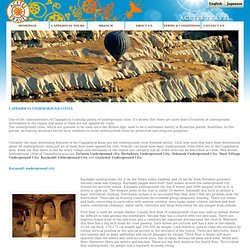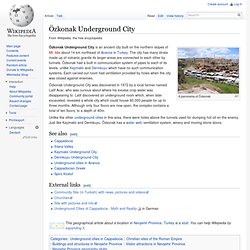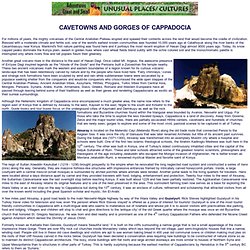

Cappadocia underground cities, tatlarin underground city, derinkuyu underground city, ozkonak underground city, mazi village underground city, kaymakli underground city and gaziemir underground city, underground cities in turkey, underground cities in cap. Derinkuyu Underground City.

There are eight floors and extend at a depth of approximately 85 m. The underground city at Derinkuyu has all the usual amenities found in other underground complexes across Cappadocia, such as wine and oil presses, stables, cellars, storage rooms, refectories, and chapels. Unique to the Derinkuyu undergorund city complex and located on the second floor is a spacious room with a barrel vaulted ceiling.
Özkonak Underground City. A panorama of Özkonak Özkonak Underground City is an ancient city built on the northern slopes of Mt.

Idis about 14 km northeast of Avanos in Turkey. The city has many strata made up of volcanic granite its larger areas are connected to each other by tunnels. Özkonak had a built in communication system of pipes to each of its levels, unlike Kaymaklı and Derinkuyu which have no such communication systems. Each carved out room had ventilation provided by holes when the city was closed against enemies. Cavetowns and Gorges of Cappadocia. For millions of years, the mighty volcanoes of the Central Anatolian Plateau erupted and spewed their contents across the land that would become the cradle of civilization.

Blessed with a moderate climate and fertile soil, one of the world's earliest known communities was founded 10,000 years ago at Catalhoyuk along the river banks of the Casambasuyu near Konya. Mankind's first nature painting was found here and it portrays the most recent eruption of Hasan Dagi almost 9000 years ago. Today, its snow capped peaks dominate the Konya plain, awash in golden hues where vast wheat fields blend subtly with the ochre colored soil and the monochromatic palette is interrupted only where rivers flow and tall poplars flaunt their greenery.
Another great volcano rises in the distance to the east of Hasan Dagi. Once called Mt.